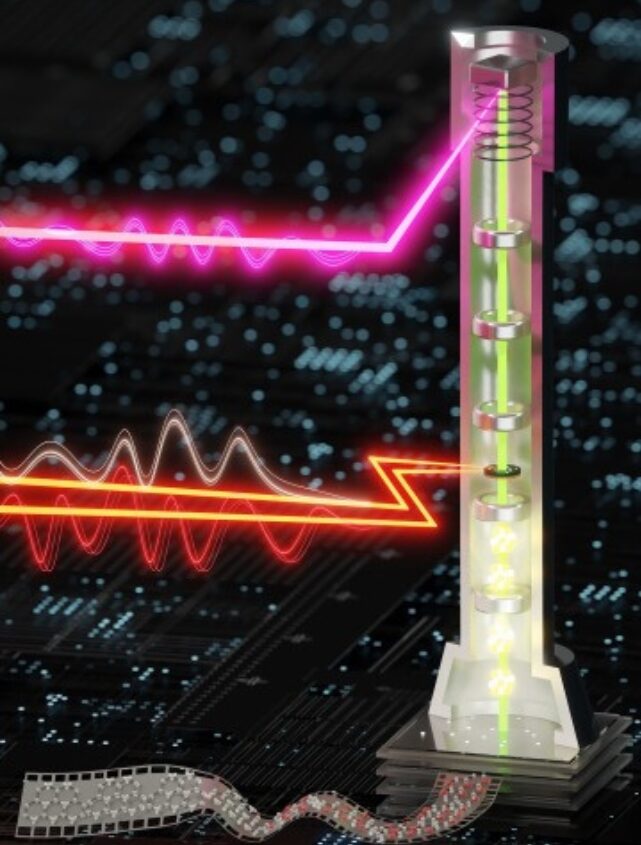Our capacity to picture the subatomic realm is restricted, not simply by decision, but additionally by velocity. The constituent particles that make up – and fly free from – atoms can, in principle, transfer at speeds approaching that of sunshine.
In observe, they typically transfer a lot slower, however even these slower speeds are means too quick for our eyes, or know-how, to see. This has made observing the habits of electrons one thing of a problem – however now the event of a brand new microscope imaging method has allowed scientists to catch them in movement, in actual time.
It is the work of a staff of physicists on the College of Arizona Tucson, led by Dandan Hui and Husain Alqattan, and it might take photographs at attosecond speeds; that is a quintillionth of a second. They’ve named the method attomicroscopy.
“The advance of the temporal decision inside electron microscopes has been lengthy anticipated and the main target of many analysis teams, as a result of all of us wish to see the electron movement,” says physicist Mohammed Hassan of the College of Arizona Tucson.
“These actions occur in attoseconds. However now, for the primary time, we’re in a position to attain attosecond temporal decision with our electron transmission microscope – and we coined it ‘attomicroscopy.’ For the primary time, we will see items of the electron in movement.”
Transmission electron microscopy, or TEM, is a method used to generate photographs of the smallest constructions within the bodily world. It depends on electrons, somewhat than gentle, to generate the picture. A beam of electrons is transmitted by way of a pattern of fabric; the interplay between the electrons and the pattern is what produces the picture. For instance, beneath is a TEM picture of a white blood cell.
Quite than the shutter velocity of a standard digital camera, TEM depends on the velocity of the laser pulses on which the electrons are transmitted. The quicker the length of the laser pulses, the higher the ensuing picture. So, if you need higher picture high quality, the best way to realize that’s by creating a laser that may hearth shorter pulses.
Beforehand, TEM lasers had reached a length of some attoseconds, launched in a prepare, a bit like a brief burst of static.
That is a completely exceptional, Nobel Prize-worthy achievement; however the issue is that, though this generates a collection of photographs, electrons transfer a bit quicker – so the adjustments in an electron between the pulses had been misplaced.
The researchers wished to see if they may discover a approach to shorten the length of the pulsed beam to only an attosecond, the velocity at which the electrons within the beam are shifting, thus permitting the TEM to seize them in freeze-frame.

The breakthrough was achieved by splitting the heartbeat into three: two gentle pulses and an electron pulse. The primary gentle pulse is named the pump pulse. It injects power right into a graphene pattern, which causes the electrons to jig about.
That is adopted up with the second gentle pulse, or gate pulse, which creates a gate, or window. Whereas it’s ‘open’, a single, attosecond electron pulse is fired on the pattern, and the attosecond-speed subatomic processes are captured.
The result’s a exact map of electron dynamics – a map that opens the door to new research of the best way these necessary particles behave.

“This transmission electron microscope is sort of a very highly effective digital camera within the newest model of smartphones; it permits us to take footage of issues we weren’t in a position to see earlier than – like electrons,” Hassan says.
“With this microscope, we hope the scientific group can perceive the quantum physics behind how an electron behaves and the way an electron strikes.”
The analysis has been revealed in Science Advances.





